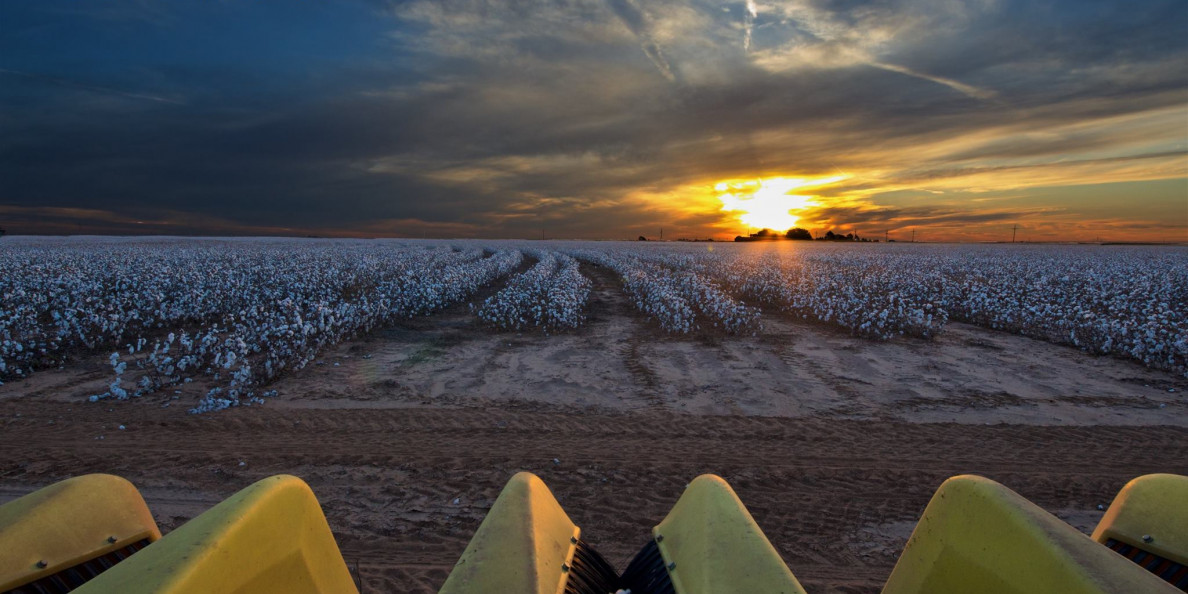The 2017 Replicated Agronomic Cotton Evaluation or RACE trial results from South, East and Central Texas are in and give producers a look at how the latest transgenic varieties performed across the state, according to a Texas A&M AgriLife Extension Service specialist.
“Our data show transgenic varieties accounted for 99% of the state cotton acreage in 2017,” said Dr. Gaylon Morgan, AgriLife Extension state cotton specialist in College Station. “Texas has been at over 90 percent transgenic varieties for a decade, but the traits being utilized are being stacked with more insect and herbicide tolerant traits.”
In 2017 in Texas, 64% of the cotton varieties were XtendFlex, up from about 10 percent in 2015, and are expected to increase again in 2018, he said. The Enlistcotton was at 3 percent in 2017, but also is expected to have a big increase in 2018 as well. However, the data show LibertyLink trait and associated herbicide remain a viable weed management system, especially in South and East Texas.
“This is one of the values of the RACE trials in South and East Texas,” Morgan said. “We provide each company’s varieties and associated traits to be included and provide an unbiased head-to-head comparison at 17 locations each year.”
He said variety decisions should start with the agronomic characteristics such as yield, maturity and fiber quality first and then match the transgenic technology with the highest pest management priority second.
The AgriLife Extension cotton agronomy team of Morgan, Dr. Josh McGinty,agronomist in Corpus Christi; Dale Mott, program specialist in College Station; along with technicians and county agents have been conducting large-plot, on-farm, replicated variety trials for 12 years in the Lower Rio Grande Valley, Blacklands, South Texas/Wintergarden and Upper Coastal regions.
He said 17 RACE trials and three Monster Trials were planted in 2017. The Monster cotton variety trials are conducted by McGinty as small-plot variety evaluations and include a larger number of both commercially available and experimental cotton varieties.
The results of all trials are available at http://Cotton.tamu.edu. Results include yield, fiber quality and estimated lint value for each location, as well as rankings based upon lint yield for the varieties within a production region.
“Yields across the Lower Rio Grande Valley and Coastal Bend were very good this season, with good early season moisture and some timely rains during the season,” Morgan said. “Also, favorable weather at harvest helped maintain yields, unlike in the Central and Upper Gulf Coast and Southern Blacklands where some received heavy rainfall as harvest approached.
“In the Upper Gulf Coast, higher-than-average yields were expected, but yield and fiber quality were significantly impacted by Hurricane Harvey. In the Southern Blacklands, low yields were primarily due to erratic rainfall during late-season, but Hurricane Harvey negatively impacted harvestable lint and fiber quality as well.”
Morgan said prior to making landfall, Hurricane Harvey caused various degrees of damage to the Coastal Bend cotton crop as a result of wind, rain and floodwaters.
“Cotton harvest was wrapping up in the lower Coastal Bend, but was in full swing further north along the middle and upper Coastal Bend regions of the state,” he said. “Cotton losses varied greatly across several regions due to damaged/destroyed modules of cotton, floodwaters that soaked modules, and excess wind, rain and floodwaters on cotton yet to be harvested. The areas to the west and north of where Harvey hit were impacted to a lesser extent.”
The average non-irrigated yields for the 2017 RACE trials ranged from 1,981 pounds per acre for Nueces County to 761 pounds per acre for the Williamson County location. Average irrigated location yields ranged from 2,369 pounds per acre for the Medina County location to 753 pounds per acre for the Burleson County location, where Hurricane Harvey also impacted yields.
Morgan said when selecting cotton varieties, several key factors should be considered before planting.
“Producers need to gather as much unbiased yield and fiber quality data as possible from their area and beyond,” he said. “Some varieties are widely adapted, while others perform well under more specific growing conditions and situations.”
Also, Morgan said, select the herbicide- and insect-tolerant traits that best fit the expected challenges for 2018.
“Seed and technologies fees for the newer herbicide and insect traits are usually more expensive,” he said. “If you don’t need these traits, then many varieties with older trait packages are still competitive in yield and quality.”
For more information, contact Morgan at gdmorgan@tamu.edu or 979-845-2425 or McGinty at jmcginty@tamu.edu or 361-265-9203.


